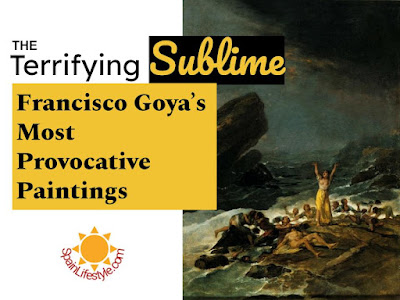DAY ONE
Under the last Spanish October skies of 2022, I and three of my students went to Madrid. Our goal was to spend Halloween in the national capital and explore all the works of Francisco Goya, who had been the topic of the month in my class. The legendary Prado Museum has the largest collection of Goya's works and I wanted my students to discover them all. But we had many other exciting experiences ahead of us!
I picked up my last student in Ondara, and we hit the motorway. Four and a half hours later, including a coffee break, we were at our hotel. We went to our rooms and put away our equipment. We refreshed ourselves with a snack in our rooms. One student had brought a kettle, so she could drink tea, which she did
We went down to the lobby and reception called our taxi. By 3.30pm we were at the Prado. I had the most delicious coffee in the museum cafeteria, and we went in search of Goya.
We did find him waiting for us at the ticket office.
* Report by Karla Ingleton Darocas. Hons. B. A. (KarlaDarocas.com)








